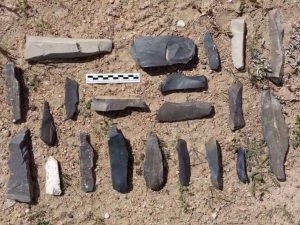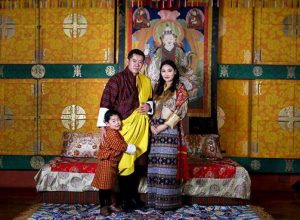Sangeeta Bansal Ph.D, a researcher and writer, is also the founder of a non-profit called Mindside, which aims to make the benefits of mindfulness meditation available to all. Mindside offers an eight-week curriculum that teaches mindfulness practices which have shown to bring about transformative change, from stress reduction, pain management, freedom from addiction and more. The program is offered to all age groups and all religious backgrounds. She can be reached at [email protected].
In the recently released sci-fi thriller “Gravity”, Sandra Bullock plays the part of Dr. Ryan Stone, a brilliant biomedical engineer at NASA who is on her first space mission. After a series of mishaps leave her stranded alone in space with limited oxygen and no radio connection with Earth, she takes the audience through a riveting adventure where she floats around from one space station to another, and figures out how to extricate herself from her precarious situation and get back to Earth.
Dr. Stone epitomizes the prevalent culture of scientific materialism, with its emphasis on finding the nature of the reality using scientific knowledge. This culture unveils of the mysteries of the universe and all its material aspects with rationality, empiricism and scientific exploration. Knowledge, technology and facts with data to support them form the bedrock of a scientist’s core values. The one vulnerable, tear-jerking moment she does have, however, is where she contemplates the imminent possibility of her death, and admits to her unpreparedness for this event. While she is exceptionally well trained to use her knowledge and wits to bring herself back to the living world, she is at an utter loss when facing the possibility of embarking on a journey that begins after the cessation of breath.
Most people do not ruminate over their own death. It seems like a morbid, depressing kind of activity to engage in. The bardo thodol teachings in Tibetan Buddhism however, go to the other extreme of suggesting that every moment of one’s life should be a preparation for death. This body of work (attributed to Padmasambhava, an Indian mystic who introduced Buddhism to Tibet in the 8th CE) presents the opportunity for liberation from the worldly cycle of birth and rebirth at the time of death.
Bardo does not seem to have found the same resonance with a global audience that teachings like vipassana have (which apply more to one’s experience on the physical and material plane). The reason is that while Judeo-Christian religions see consciousness as a by-product of physical matter (the body and the brain), in Indian spiritual traditions death does not terminate the mental elements of a person, only the physical ones. In other words, consciousness continues (albeit in more subtle forms) after the brain has ceased to be. Furthermore, the dissolution of physical elements is just temporary, as the mental elements soon reconstitute themselves into matter through the process of rebirth, to continue their karmic journey (Tr. By W.Y. Evans-Wentz, 1927. The Tibetan Book of the Dead, Oxford University Press).
More recently, diverse spiritual leaders and celebrities have joined the search for the existence and exact location of this “consciousness” principle. Quantum physicists suggested it was a “ground of all being”, and reiterated that the science of spirituality includes materiality (Goswami, 2001. Physics of the Soul: The Quantum book of Living, Dying, Reincarnation and Immortality, Hampton Roads). Goswami’s quantum theories easily (and scientifically) accommodate matter within spirit, and scientific materialism within spirituality – unlike the Descartesian, dualistic world that delineates the two irreconcilably. The spiritual guru and alternative medicine practitioner Deepak Chopra also writes, “Our non-local consciousness is projected through our body and senses, but our consciousness is not dependent upon the body for its existence”. By contrast, neuroscientists like Richard Davidson and Christopher Koch usually start with the assumption that consciousness is located in the brain, whereas in Indian religions like Buddhism, this is not a limiting pre-condition at all (see for example, the XXVIth Mind and Life Conference Proceedings on Brain, Mind and Matter: http://www.youtube.com/watch?v=bOpVrprggG0).
Once we allow for the subtle mental body to exist after death, there is then the continuation of experience. The experiences of the subtle body are good and bad based on a series of causes, just as the experiences of the physical body. The descriptions of the visual experiences that are laid out in the bardo teachings include an extravaganza of lights and a parade of beautiful deities and also terrifying demons. The teachings advise remembering the illusory nature of all that is being seen, and understanding them to be the projections of one’s mind, like watching a happy or a scary movie but remembering it’s just a screen projection. The quality of one’s experience in the forty-nine days following death is supposedly dependent on the nature of the mind carried around during the lifetime. The teachings also advise keeping the intention of going towards higher realms, and not choosing comfortable alternatives.
It is important to note that although the experience after death may be very disorienting and de-stabilizing for the non-corporeal consciousness, thebardo teachings themselves are not that different from the those for living persons, if one can get past the dizziness! The fixation of mind on higher goals rather than temporary pleasures, the impermanence of phenomena, the illusory and ephemeral nature of things, the importance of detachment from worldly relationships, the ability of the mind to project its own reality and derive experience, the manifestation of mind into matter – all these teachings must be hardwired into the brain at the time of death, so that the consciousness is well trained to cruise through the unchartered territory. This mind training happens through repeated reflection on these through meditation, and through life lessons. In order to be in a state of non-grasping (to our attachments here on earth), we must first be aware of the ephemeral nature of our attachments, and also be willing to get off the karmic wheel of life, however joyful it may seem. As Alan Watts explains it (quoted in Goswami, 2001 Physics of the Soul, p.20), “the ultimate suffering of boredom catches up with you; the idea of eternal attachment to the karmic wheel will seem dreadful to all of us sooner or later”. This lifetime presents us with many experiences to come to this understanding and meditation hones our skills to avoid samsaric dukkha (worldly suffering). With some training and a qualified guide like a guru, one can navigate consciousness towards the “naked awareness” of the pure mind (rigpa). If not, the mind grasps on to only what is known and feels safer, thereby limiting itself from the incredible opportunities presented by the transition moment.






Just like life does, death also presents a remarkable opportunity to catapult oneself towards higher realms of existence and, if one is truly an adept, to achieve enlightenment. While “the word bardo is commonly used to denote the intermediate state between death and rebirth, but in reality bardos are occurring continuously throughout both life and death, and are junctures when the possibility of liberation, or enlightenment is heightened” (Sogyal Rinpoche, 2002.The Tibetan book of Living and Dying p.11. Harper Collins). Every time we let go of a strong attachment to the materialistic world, we overcome a bardo, a mini liberation, or a small step towards enlightenment. Life offers “co-emergent choices” – those that appeal to our “grasping” selves and are geared towards maintaining status quo where there is comfort and safety. But sometimes it offers a harder path along with the innate knowledge that it is for our higher good – if we should so choose.
Meditation therefore not only improves the quality of lives while we are alive, but also dramatically enhances our ability to manage the bardo of dying. A mind seasoned by years of meditation can stand back and observe the experience with no panic, dispassionately choosing either liberation, or the circumstances of its next birth (even its parents to-be and the type of environment it will take re-birth in). All “karmic contracts” are made at this point where the mind choose to work out future experiences based on previous lives. It is critical at this juncture, to be free from anger, revenge or fear, so that the mind can choose future lives filled positive experiences.In some funeral ceremonies that I have observed, there seems to be an inordinate amount of grief displayed by the mourners – the assumption being that one who does not exhibit sadness is cold hearted and self-absorbed. Tibetan teachings, by contrast, warn of excessive attachment to the dying person, which is akin to not giving him or her the permission to leave the world. This amplifies the dying person’s attachments, fear, pain and suffering. What is really needed in that moment is unconditional love and gentle communication in the form of eye contact, a soft touch or massage, chanting of a soft mantra, and holding the person close in one’s arms. This gives them confidence to embark on their solo journey, an untethered walk through space. And as Dr. Stone remarks to herself towards the end of the movie, “it promises to be one heck of a ride”.






